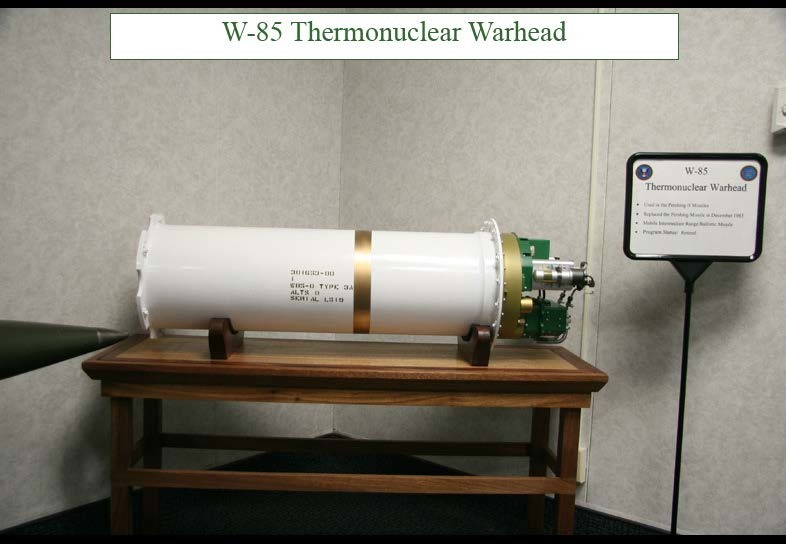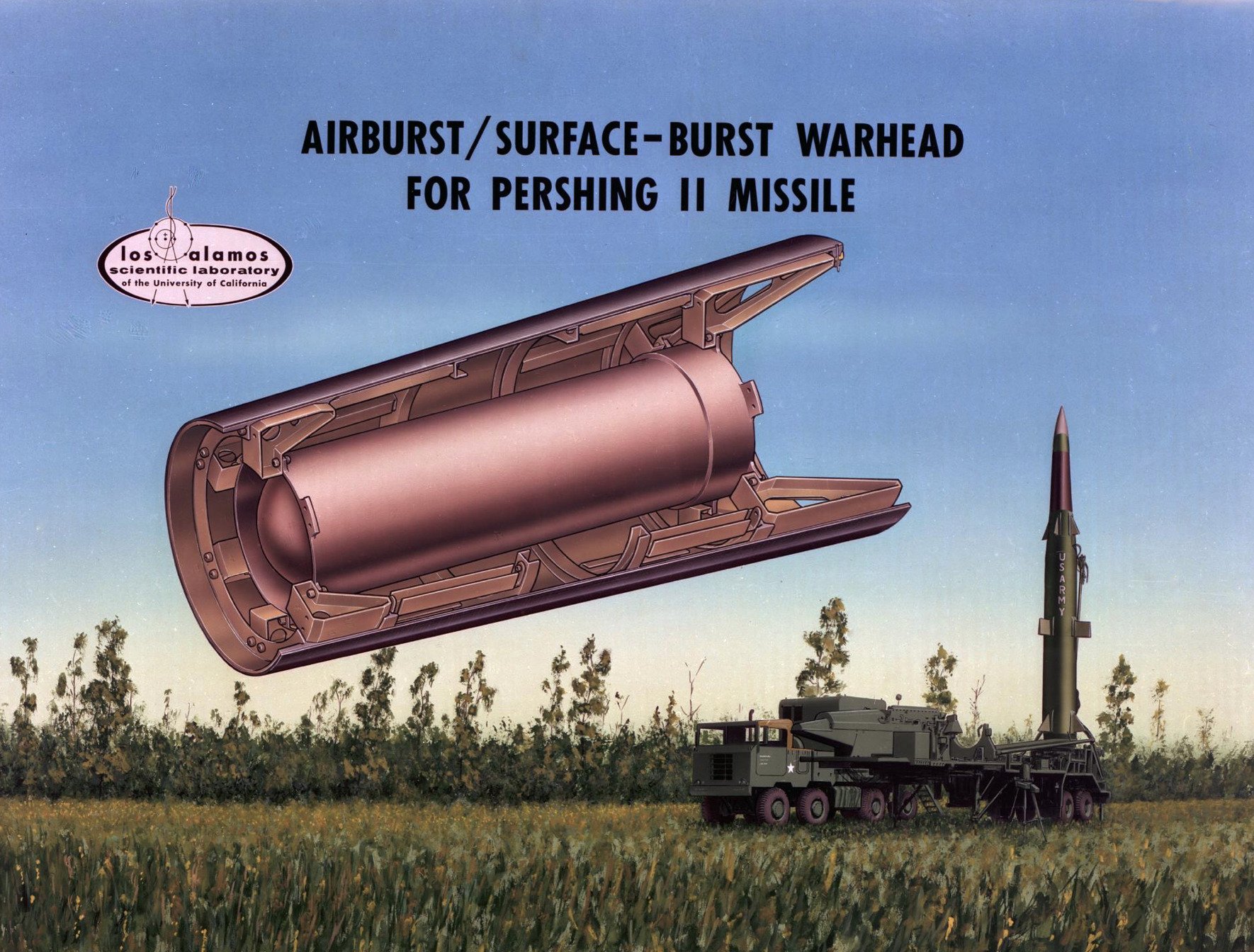W85 on:
[Wikipedia]
[Google]
[Amazon]

 The W85 was a thermonuclear warhead developed by the
The W85 was a thermonuclear warhead developed by the

 The W85 was a thermonuclear warhead developed by the
The W85 was a thermonuclear warhead developed by the United States of America
The United States of America (U.S.A. or USA), commonly known as the United States (U.S. or US) or America, is a country primarily located in North America. It consists of 50 states, a federal district, five major unincorporated territo ...
to arm the Pershing II
The Pershing II Weapon System was a solid-fuel rocket, solid-fueled multistage rocket, two-stage medium-range ballistic missile designed and built by Martin Marietta to replace the Pershing 1a Field Artillery Missile System as the United States ...
missile. It was a variable yield
Variable yield, or dial-a-yield, is an option available on most modern nuclear weapons. It allows the operator to specify a weapon's yield, or explosive power, allowing a single design to be used in different situations. For example, the Mod-10 ...
device with a selectable yield of .
Overview
The Pershing Ia missile was armed with a W50 warhead. By the early 1970s, it was clear that this was far too large to allow the missile to be used as atactical nuclear weapon
A tactical nuclear weapon (TNW) or non-strategic nuclear weapon (NSNW) is a nuclear weapon that is designed to be used on a battlefield in military situations, mostly with friendly forces in proximity and perhaps even on contested friendly territo ...
—at the time, 400 kilotons was larger than many strategic warheads. The Pershing II had a high-accuracy maneuverable reentry vehicle
The maneuverable reentry vehicle (abbreviated MARV or MaRV) is a type of warhead for ballistic missiles that is capable of maneuvring and changing its trajectory.
MaRV can be capable of autonomously tracking ground targets to make sure the mis ...
(MARV) equipped with a radar terminal guidance system, which allowed it to use the lower-yield W85 warhead. This warhead was derived from the B61 Mod 3 and utilized the same pit in the primary stage of the warhead, but it has also been described as having a nuclear design similar to that of the B61-4. The total weight of the Pershing II warhead section was , which included the reentry vehicle.
In 1987 a joint Army/Department of Energy A Ministry of Energy or Department of Energy is a government department in some countries that typically oversees the production of fuel and electricity; in the United States, however, it manages nuclear weapons development and conducts energy-rel ...
study concluded that it was technically and financially feasible to replace the W50 warhead carried by Pershing 1a with the W85 warhead developed for Pershing II. However, with the signing of the Intermediate-Range Nuclear Forces Treaty
The Intermediate-Range Nuclear Forces Treaty (INF Treaty, formally the Treaty Between the United States of America and the Union of Soviet Socialist Republics on the Elimination of Their Intermediate-Range and Shorter-Range Missiles; / ДРСМР...
, development on the conversion was terminated.
After the Pershing missiles were scrapped, all of the W85 warheads produced were modified into B61 Mod 10 bombs. 215 W85 warheads were manufactured.
References
{{United States nuclear devices Nuclear warheads of the United States Military equipment introduced in the 1980s